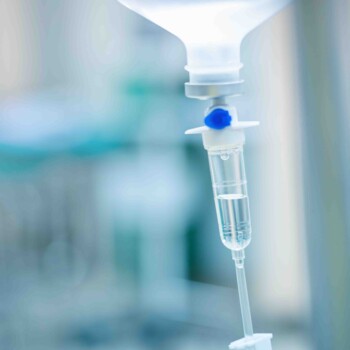Article Summary
The Myers' cocktail, a popular IV therapy, offers various health benefits including energy boosts and immune support. Customizable to patient needs, it's administered intravenously by healthcare professionals and is well-tolerated by many. Learn about its ingredients, safety, and potential side effects for informed decision-making.A Myers’ cocktail is an increasingly popular intravenous therapy. The late John Myers, MD, was the first to introduce this vitamin and mineral treatment. He designed this formula to potentially treat several clinical conditions including fatigue, fibromyalgia, muscle spasms, and many more.
Although the original Myers’ cocktail may work for many ailments, healthcare providers often tailor similar treatments for their patients to meet their specific needs.
What Ingredients Are Included in a Myers’ Cocktail?
The standard Myers’ cocktail includes:
- Vitamins: Vitamin C, B-Complex vitamins, Vitamin B12
- Calcium: Calcium aids bone formation and strength. It also can help control irregular heartbeats.
- Magnesium: Generally stored in bones, muscles, and soft tissues. It has been found to reduce fatigue, migraines, and muscle spasms and may even help those at risk of cardiovascular diseases.[1]
- Zinc: Zinc has been proven to help regulate the immune system. Zinc is not naturally created in the body. Deficiency of zinc can lead to subsequent health issues.
- Glutathione: Glutathione is a potent antioxidant that naturally occurs in the body. Glutathione aids the immune system and has been found to help in the prevention of cancer, cystic fibrosis, HIV, and the normal aging process.
- Saline Solution: All ingredients for the Myers’ cocktail are combined in an IV bag usually consisting of normal saline.
Other ingredients may also be included, depending on the type of infusion a patient is receiving. Although this cocktail is made with generally safe components, medical providers should consider underlying conditions when treating patients. Healthcare providers often increase, decrease, add, or exclude certain vitamins and minerals to create a focused treatment for their patient’s specific goals.
A revised formulation of the Myers’ cocktail may include:[2]
- 1 mL B-Complex
- 5 mL Vitamin C (500 mg/mL)
- 5 mL Magnesium Chloride (30%)
- 3 mL Calcium Gluconate (10%)
- 1 mL Pyridoxine Hydrochloride (100 mg/mL)
- 1 mL Dexpanthenol (250 mg/mL)
- 0.5 mL Hydroxocobalamin (2,000 mcg/mL)
A common booster used to accompany IV infusions is a potent antioxidant, glutathione. Glutathione may aid in disease prevention, immune function and energy levels.
Who Needs a Myers’ Cocktail?
When asked who should consider a Myers’ cocktail infusion, there is no single answer. Because of the high dose of antioxidants, nutrients, and other immune-boosting factors, individuals who have weakened immune systems or diseases that negatively impact immune resilience may benefit from receiving a Myers’ cocktail IV treatment.
Studies have found the Myers’ cocktail may be benefit patients who:
- Suffer from low energy
- Perform athletic exercises
- Suffer from chronic fatigue
- Require intravenous hydration
- Seek relief from hangover or withdrawal symptoms[3]
- Suffer from depression or anxiety
According to Myers’ cocktail studies and reviews, since the cocktails are made of vitamins and minerals, they tend to be well tolerated by many patients. Since treatment is administered intravenously vs. passing the digestive system, higher concentrations of the vitamins are more easily absorbed and thus bioavailable to the body.
Benefits of a Myers’ Cocktail Infusion
Health benefits may come from receiving a Myers’ cocktail with for many patients.
For example, magnesium has been found to prevent or reduce asthma attacks, chronic fatigue, cardiovascular diseases, fibromyalgia, chronic sinusitis, rhinitis, upper respiratory tract infections, migraines, and more. Magnesium with vitamin B may increase the efficacy when paired together for those who suffer from cardiovascular diseases.[4]
Indications have been found that vitamin B6 (up to 50 mg per day) and B12 may relieve muscle weakness associated with hyperthyroidism. Those who suffer from acute muscle spasms, poor sleep at night, or high levels of stress, may have a magnesium deficiency and may benefit from receiving intravenous treatment to bring their magnesium levels to an optimum state.
How to Administer a Myers’ Cocktail IV
A Myers’ cocktail IV treatment is administered intravenously and requires a licensed healthcare professional to deliver the treatment.
Depending on the infusion rate and total bag volume, the treatment usually takes between 30-90 minutes and usually involves minimal pain. The IV administration is performed by seating the patient, placing a tourniquet on their upper arm, and disinfecting the entry point. Then, a small butterfly catheter needle is inserted into the vein. The needle is held in place with a piece of medical tape and the IV bag is connected.
These IVs tend to drip for 30-90 minutes before the bag is depleted. It is recommended that IVs are set to drip slower for first-time users to minimize negative side effects, which may include dizziness, discomfort, or nausea. A slower drip also helps lower the chance of a negative reaction or sensitivity to the magnesium that may be in the infusion.
Oral Application vs. Intravenous
So why not just take these vitamins orally? When taken orally, these same types of vitamins may not be fully absorbed by the digestive system. Many of these vitamins may also upset the digestive tract and can only be taken in small doses orally, limiting the amount of vitamins available for absorption.
How Often are Treatments Administered?
It is up to the healthcare practitioner and the patient to decide a treatment schedule that will be most beneficial for the patient.
In some cases, optimal results may come with one IV per week over three weeks. If the patient is severely fatigued or has persistent migraines, two treatments per week may better serve these needs. Some patients may benefit from occasional treatments every three to four months to support immune function.
If an individual is suffering from a disease, they may start with frequent doses and then taper down to monthly usage after stabilizing their condition. Whatever the frequency, dosage, or mixture, the intravenous nutrient therapy option is customizable depending on the patient’s needs.
Safety Information and Possible Side Effects
A Myers’ cocktail may have relatively mild side effects. These typically are the same as with any IV:
- Discomfort at infusion site
- Lightheadedness
- Vasovagal reaction (fainting)
A common effect from intravenous doses of magnesium is a warming or “flushing” sensation. It can be felt on the skin in the chest area, pelvic area, or face. It is not usually something that is unpleasant for the patient. Calcium has also been known to have similar effects in some cases.
Since magnesium may effectively lower blood pressure, there may be a risk for hypotension or low blood pressure, but this is rare. Patients who experience any sensations that feel abnormal should inform the healthcare practitioner who is administering their IV—feeling excessively hot or lightheaded could indicate the onset of hypotension. It could be that the magnesium is being infused too quickly.
If the patient experiences these symptoms, the practitioner should discontinue treatment until symptoms dissipate. Usually, this takes 10-30 seconds.
Responses vary between IV recipients. For the first time treatment, a prescriber may only administer a dose of 500-1,000 mg of magnesium before deciding to give a higher dose; this is especially recommended for elderly patients. Reactions usually tend to show within the first 10-30 seconds of treatment. After the patient shows they accept the treatment well, the practitioner can adjust the treatment as needed.
Combining magnesium and potassium may also cause some individuals issues since magnesium can promote an intracellular uptake of potassium. This uptake can trigger hypokalemia and cramping up to several hours after infusion. There is also a minimal risk of digoxin-induced cardiac arrhythmias.
If giving thiamine in the Myers’ cocktail infusion, there is also a slight risk for arrhythmias in some patients. Again, this is not common and usually stems from its combination with magnesium.
It should also be noted that anytime the body has excess vitamins, it naturally increases excretion. Patients on dialysis or who have kidney issues may not need the same amount of vitamins than a person with healthy kidneys. A patient’s healthcare provider should modify treatment accordingly.[5]
How Effective is a Myers’ Cocktail?
Vitamin infusions have gained popularity from partygoers to celebrities who boast about the benefits for health, antiaging, higher energy, hangover remedies, and more. Certainly, the popularity is alluring, but many people want to know, does IV therapy really work?[6]
Some healthcare professionals say the body will only keep what it needs, and the kidneys will filter out the excess, so potent vitamin IVs are not useful. However, inhibited absorption of vitamins tends to occur in patients suffering from poor kidney function. These patient’s doctors must consider this limitation when prescribing IV therapy.[5]
Patients wanting a Myers’ cocktail for their overall wellness can find these, or similar, treatments at spas or wellness clinics.
Many studies and reviews indicate that the Myers’ cocktail can benefit overall wellness, immune function, and energy levels. Some opposition believes these infusions are mostly a placebo for the patient. However, many studies show that adequate vitamin levels are essential for optimal health. Therefore, most healthcare workers believe that the benefits may outweigh possible side effects. Healthcare providers should discuss all the potential benefits and side effects with their patients and consider the patient’s full medical history before initiating treatment with a Myers’ cocktail IV. As with any medical treatment, patients should be well informed and discuss treatment options with their doctor.
If you have questions or want more information about the Myers’ cocktail please consult with a healthcare professional.
- Dr. Alan Gaby, Concord, N.H. “Don’t underestimate the Myers cocktail” FEB 23, 2018. Available: https://www.baltimoresun.com/opinion/readers-respond/bs-ed-rr-myers-cocktail-letter-20180222-story.html
- J Altern Complement Med, “Intravenous Micronutrient Therapy (Myers’ Cocktail) for Fibromyalgia: A Placebo-Controlled Pilot Study, March 2009. Available: https://www.ncbi.nlm.nih.gov/pmc/articles/PMC2894814/
- Dr. Alan Gaby, Concord, N.H. “Don’t underestimate the Myers cocktail” FEB 23, 2018. Available: https://www.baltimoresun.com/opinion/readers-respond/bs-ed-rr-myers-cocktail-letter-20180222-story.html
- Alan R. Gaby, MD., “Intravenous Nutrient Therapy: the “Myers’ Cocktail”, Alternative Medicine Review Volume 7, Number 5, 2002. Available: https://static1.squarespace.com/static/5bd418b6c2ff616bbd21b89f/t/5f3b1b77a5bf4e68d3af2155/1597709178057/Intravenous+Nutrient+Therapy-+the+Myers%E2%80%99+Cocktail.+Alan+R.+Gaby%2C+MD.pdf
- IV Health Center, “What Do Celebrities Know About IV Therapy?”, 2017. Available: https://ivhealthcenter.com/2018/12/iv-vitamin-therapy/
- Federal Trade Commission, “FTC Brings First-ever Action Targeting “IV Cocktail” Therapy Marketer”, September 20, 2018. Available: https://www.ftc.gov/news-events/press-releases/2018/09/ftc-brings-first-ever-action-targeting-iv-cocktail-therapy




